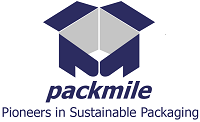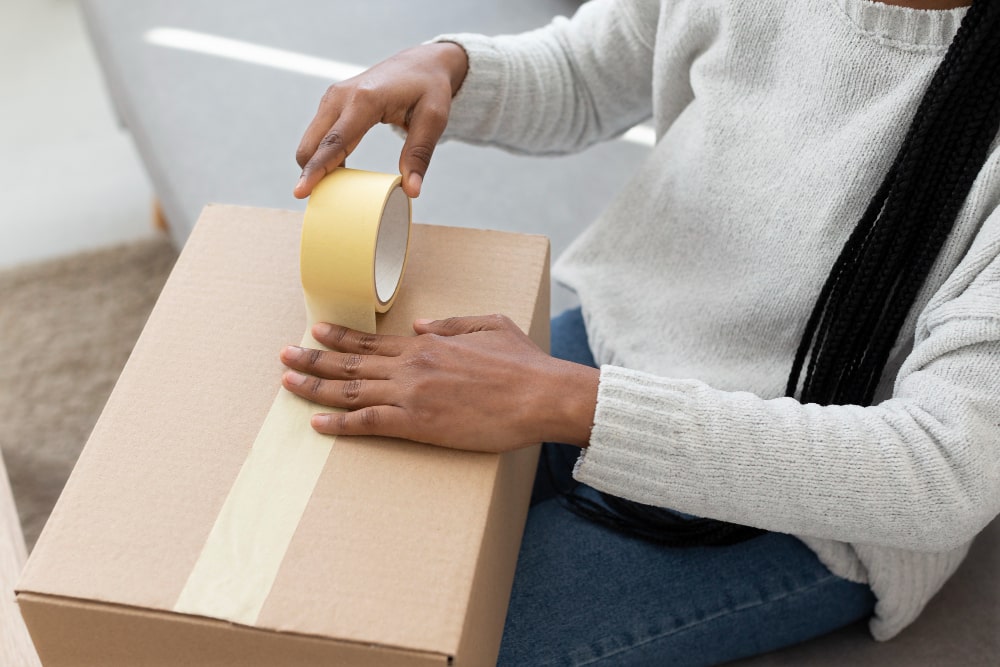Consumers are becoming more aware of how their purchases affect the environment in the modern world. This includes not just the product but also the package it comes in. Conventional void fillers, such as packing tape and plastic peanuts, generate needless waste when they wind up in landfills. Fortunately, there are several eco-friendly substitutes out now that can reduce your environmental impact and successfully protect your products. This blog explores eco-friendly packing tape and void fillers, providing long-term solutions for your packaging requirements.
Types of Eco-Friendly Void Fillers
The days of having only plastic void fillers available are long gone. Here are a few environmentally friendly void fillers that provide superior security and comfort:
1. Recycled Paper and Cardboard
Shredded cardboard and recycled paper are commonly accessible and a reasonably priced filler for voids. They simply adapt to fit different box sizes and provide superior cushioning. Their recyclable and biodegradable nature reduces their environmental impact.
2. Bio-Based Options
Bio-based void fillers are an environmentally friendly option since they are formed from renewable materials like cornstarch or mushroom mycelium. These solutions are perfect for companies that reduce waste because they dissolve in water and are completely compostable.
3. Inflatable Air Pillows
An excellent way to save space is using inflated air cushions made of biodegradable film or recycled plastic. When deflated, they occupy very little storage space and may be readily inflated to cover gaps precisely. Choosing biodegradable film or recycled plastic variants lessens the impact on the environment even further.
4. Re-usable Void Fill Systems
These creative techniques use inflatable dunnage bags or reusable pouches. Air-filled pouches can be carefully arranged inside the box. Inflatable dunnage bags offer superior protection and can mold to the shape of your product. Their reusable nature significantly reduces waste.
Eco-Friendly Packing Tape Strategies
When it comes to keeping your possessions safe during traveling, packing tape is essential. Conventional plastic tapes are not recyclable and frequently contain hazardous chemicals. The following are some eco-friendly substitutes for packing tape:
1. Paper Packing Tape
Paper packing tape is a sustainable substitute for plastic tape since it is generated from recycled paper fibers and has a natural adhesive. It is ideal for lightweight to medium-weight packages and provides a firm grip.
2. Water-Activated Tape
Water activation is necessary for this tape to form a solid bond. Water-activated tape is recyclable and made of paper with a natural adhesive layer. It decomposes naturally.
3. Gummed Paper Tape
Gummed paper tape, like water-activated tape, contains a water-soluble adhesive that gets sticky when wet. It can enhance your brand’s image and is perfect for tamper-evident sealing. It also has a vintage look.
Reducing Packing Tape Usage
As useful as eco-friendly packaging tape is, it’s also a good idea to use it as little as possible. Here are a few methods to accomplish this:
1. Right-Sizing Boxes
It is not necessary to use a lot of void filler or tape to secure loose goods when using the proper size box. Select packaging that will wrap your goods with as little void as possible.
2. Interlocking Flaps
Interlocking flaps on boxes naturally provide a tight seal, eliminating the need for tape. To cut down on the amount of tape you use, look for boxes that include this feature.
3. Bundling Multiple Items Strategically
Before putting several tiny things in the package, think about bundling them together. This lessens the need for separate packaging and the amount of tape needed to secure each item.
Tips for Effective Sealing with Eco-Friendly Tape
The application techniques for eco-friendly tapes may differ slightly from those for conventional plastic tapes. Here are a few tips for effective sealing:
- Ensure a clean and dry surface: Make sure there is no moisture, dust, or dirt in the areas where you plan to put the tape for best adhesion.
- Apply firm pressure: Once the tape is in place, firmly press down the entire length of the tape to form a tight binding. Make sure to moisten paper gummed or water-activated paper tape for maximum adhesion.
- Use double taping for heavier boxes: For extra security, use two strands of tape for heavy packages. But whenever possible, try to use as little tape as possible.
Go Green with Packmile: Sustainable Packaging Solutions for a Better Tomorrow!
We at Packmile know how important environmentally friendly packaging is. To help your company reduce its environmental effects, we provide a variety of sustainable packaging tape choices. Our selection includes everything you need to make safe and environmentally responsible packaging, including paper tape dispensers, pallet straps, covers, and eco-friendly packing tapes.
FREQUENTLY ASKED QUESTIONS
Can I use eco-friendly tape for heavy or fragile items?
Yes, eco-friendly tapes are designed to provide reliable sealing for various packaging applications, including heavy or fragile items. However, to ensure maximum protection during transit, it's essential to choose the appropriate tape type and ensure proper application.
What are the benefits of using eco-friendly void fillers and packing tape?
Using eco-friendly void fillers and packing tape reduces environmental impact by minimizing reliance on non-renewable resources and promoting recycling and composting.
How can I choose the right void filler and packing tape?
When selecting void fillers and packing tape, consider packaging requirements, environmental goals, and budget constraints. Choose materials that are recyclable, biodegradable, or made from renewable sources to align with sustainability objectives while meeting functional needs.
How will you promote environmental care in your packaging?
Promoting environmental care in packaging involves adopting sustainable practices such as using eco-friendly materials, optimizing packaging efficiency, and minimizing waste generation.



Leave A Comment